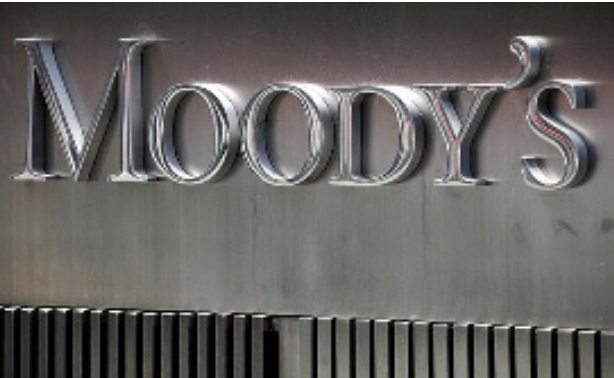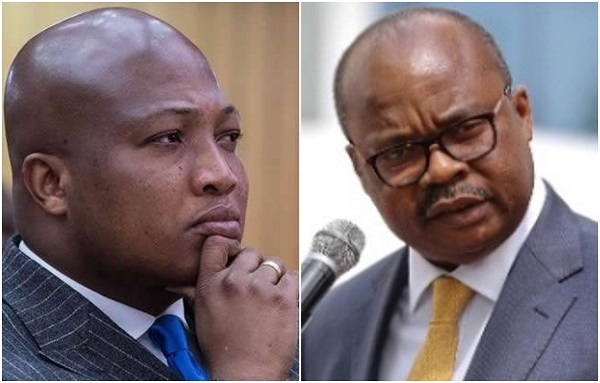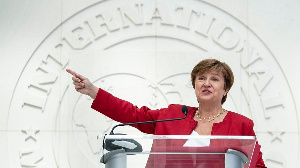Ghana’s economy downgraded by Moody’s from B3 to Caa1, outlook stable

Ghana’s long-term issuer and senior unsecured debt ratings downgraded
Fitch also downgrades Ghana’s credit rating with a negative economic outlook
Ghana facing liquidity and debt challenges, Moody’s
Ghana’s economy has been downgraded by Moodys from B3 to Caa1 with a review of the country’s rating outlook from negative to stable.
The latest rating of Ghana’s long-term issuer and senior unsecured debt ratings issued on Friday, February 4, 2022 was influenced by liquidity and debt challenges as well as weak revenue generation constraints.
The agency also pointed out that Ghana has not been able to afford government the opportunity to be flexible with its expenditure.
“The downgrade to Caa1 reflects the increasingly difficult task the government faces addressing its intertwined liquidity and debt challenges. Weak revenue generation constrains government’s budget flexibility, and tight funding conditions on international markets have forced the government to rely on costly debt with shorter maturity,” Moody’s noted.
In addition, Moody’s said its latest projection indicates that more than half of Ghana’s generated revenue will go towards making interest payments in the years ahead.
It also cautioned that solutions offered by the government which are meant to fix the issues do not seem feasible particularly in a volatile post-COVID-19 era.
“While Ghana’s external buffers and moderate external debt amortization schedule in the next few years afford the government a window of opportunity to deliver on its strategy, balance of payments pressures will build up the longer government’s large financing requirements have to rely on domestic sources,” Moodys added.
Read Moody’s full report on Ghana below:
Rating Action:
Moody’s downgrades Ghana’s rating to Caa1; outlook stable.
Global Credit Research – 04 Feb 2022 Paris, February 04, 2022 —
Moody’s Investors Service (“Moody’s”) has today downgraded the Government of Ghana’s long-term issuer and senior unsecured debt ratings to Caa1 from B3 and changed the outlook to stable from negative. Moody’s has also downgraded the senior unsecured MTN programme ratings to (P)Caa1 from (P)B3 and the backed senior unsecured debt rating to B3 from B1.
The downgrade to Caa1 reflects the increasingly difficult task the government faces addressing its intertwined liquidity and debt challenges. Weak revenue generation constrains government’s budget flexibility and tight funding conditions on international markets have forced the government to rely on costly debt with shorter maturity.
Moody’s estimates that interest payments will absorb more than half the government’s revenue over the foreseeable future, which is exceptionally high compared to peers at all rating levels.
As a remedy, the government has proposed sharp fiscal consolidation and a switch to borrowings from external partners on more favourable terms. However, the strategy comes with sizeable implementation risks, especially in a still-fragile post-pandemic environment and while international market creditors price in very wide risk premia.
While Ghana’s external buffers and moderate external debt amortization schedule in the next few years afford the government a window of opportunity to deliver on its strategy, balance of payments pressures will build up the longer government’s large financing requirements have to rely on domestic sources.
The stable outlook balances Ghana’s significant fiscal challenges, large refinancing needs and constraints on access to funding against the government’s pre-pandemic track record of relatively effective policy delivery and maintenance of a variety of funding sources. Ghana’s institutional framework and dynamic economy remain key credit supports, with economic growth forecasts of around 5% over the medium term.
Concurrent to the rating downgrade, Moody’s has also downgraded Ghana’s bond enhanced by a partial guarantee from the International Development Association (IDA, Aaa stable) to B3 from B1, reflecting a blended expected loss now consistent with a one-notch uplift on the issuer rating.
Finally, Moody’s has lowered Ghana’s local currency (LC) and foreign currency (FC) country ceiling to respectively B1 and B2 from Ba3 and B1. Non-diversifiable risks are appropriately captured in a LC ceiling three notches above the sovereign rating, taking into account relatively predictable institutions and government actions, low domestic political, and geopolitical risk; balanced against a large government footprint in the economy and the financial system and current account deficits.
The FC country ceiling is maintained one notch below the LC country ceiling, reflecting constraints on capital account openness and fiscal policy effectiveness against robust foreign exchange reserves buffers and an average monetary policy effectiveness.
RATINGS RATIONALE FOR THE RATING DOWNGRADE TO Caa1, DEBT AFFORDABILITY WORSENS, GOVERNMENT DEBT STILL ON AN UPWARD TREND
Moody’s projects that Ghana’s government debt ratios will continue to deteriorate in the next few years with extremely weak debt affordability significantly constraining policymaking.
Moody’s estimates that government debt ended 2021 at 80% of GDP while interest payments alone consumed half of government revenue that year (positioning Ghana with the second largest ratio among Moody’s rated sovereigns).
Given Ghana’s still low average income at about $6000 per capita at Purchasing Power Parity and demands on social spending, very weak debt affordability constrains the government’s scope of policy action, intensifying the policy trade-off between servicing debt and delivering services to the Ghanaian population.Moody’s projects that the government will improve its primary balance by a cumulative 3% of GDP over 2022-24.
The government’s own fiscal consolidation plan presented in November 2021 sets more ambitious targets, supported by new revenue measures worth 3% of GDP, some of which have since been opposed in Parliament. The government has announced a 20% cut in primary spending, equivalent to a 4% cut on a year-on-year basis or 16% in real terms, to compensate for any shortcoming in the government’s revenue measures package.
Such an unprecedented fiscal tightening will be socially, economically, and politically challenging to implement. Moreover, Moody’s factors in further fiscal pressure from interest payments in the short term as the deterioration in funding conditions recently observed is unlikely to reverse until the government demonstrates to investors that significant fiscal consolidation is underway.
Both domestic and external factors underpin Moody’s assumption that debt costs will remain high, including high inflation (at 12.6% most recently) and Moody’s expectation of tighter monetary policy globally. Ghana’s borrowing needs remaining elevated, at around 30% of GDP annually, mean higher borrowing rates will quickly translate into higher interest costs.
Ultimately, Moody’s expects that a higher interest bill in 2022 and 2023 will offset the improvement in the government’s primary balance, thereby maintaining double-digit fiscal deficits (in cash terms) with a concomitant increase in the government’s debt burden.
WEAKER GOVERNMENT LIQUIDITY POSITION; EXTERNAL PRESSURES TO MOUNT THE LONGER FINANCING OPTIONS REMAIN CONSTRAINED
The government of Ghana’s capacity to access sufficient funding sources at manageable costs to meet large funding needs has deteriorated. The government’s external funding options have narrowed and, for the time being, appear limited to official sector sources or financing secured with the support of the official sector.
This implies a greater reliance on domestic borrowing, primarily sourced from the banking sector at a cost that has recently increased to high levels. Ghana’s fiscal reserves, including in the various petroleum funds remain very small and therefore not suited to provide funding in times of stress.
Ghana’s constraints on external funding come at a time when external debt service requirements in foreign currency are contained, thereby limiting short-term government liquidity risks. Foreign exchange reserves at $9.3 billion as of October 2021 according to the IMF (equivalent to 8 months of imports) provide a buffer to meet external debt flows.
However, over the medium term, the government’s external liquidity profile will likely erode unless Ghana is able to restore its access to a wider range of external borrowing sources, including international markets.
This, in turn, will rely on the ability of the government to demonstrate a track record of delivering on its fiscal consolidation objectives.
RATIONALE FOR THE STABLE OUTLOOK
The stable outlook balances Ghana’s significant fiscal challenges, large financing needs and funding constraints against the government’s pre-pandemic track record of relatively effective policies and maintenance of a variety of funding sources.
On the downside, the constraints to policymaking posed by interest payments absorbing such a large proportion of the budget, risk undermining growth and, over time, social stability.
However, while the capacity of the government to reduce its borrowing needs is limited, in 2022-23 refinancing will be primarily for local currency debt, providing a time-window for the government to deliver on its fiscal consolidation strategy and engender confidence that may restore its access to a broader range of external funding sources.
Meanwhile, Ghana’s institutional framework and dynamic economy remain key credit supports. The government built a track record of meeting fiscal targets in the years preceding the pandemic-related shock in 2020, managing to consolidate its primary balance by 4.5% of GDP between 2016 and 2019.
Improvements to Ghana’s personal and property tax systems and customs will likely continue and help the government in its efforts to improve tax compliance. Finally, the country’s strong growth potential from multiple sources both in the oil and non-oil sectors underpins Moody’s expectation for growth in the range of 4.5-6% over the medium term.
ENVIRONMENTAL, SOCIAL, GOVERNANCE CONSIDERATION
SGhana’s ESG Credit Impact Score is highly negative (CIS-4), reflecting its high exposure to social risks. Resilience to environmental and social risks is weak, constrained by low wealth and high debt levels.Ghana’s credit profile is moderately exposed to environmental risks (E-3 issuer profile score).
The cocoa sector is a large contributor to GDP, exports and employment and being demanding in water, it exposes the country to climate changes and especially droughts. Ghana is exposed to water management risks stemming from a lack of access to potable water in some areas. The weight of the agricultural sector exposes the economy to weather-related disruptions and the effects of climate change.
The exposure to social risk is high (S-4 issuer profile score), driven by limited access to quality housing and education, especially in rural areas. Risks related to health and safety and access to basic services are moderately negative.
While the government has put in place measures aimed at reducing poverty and inequality and strengthening social safety nets, its fiscal challenges constrain its scope for meaningful reduction in social risks given more than half of government revenue is consumed by interest payments.
Governance is highly negative with a G-4 issuer profile score. Overall, Ghana’s institutions have shown some effectiveness. Moody’s has lowered the governance issuer profile score to reflect domestic revenue mobilisation challenges and significant constraints on fiscal policy effectiveness reflected by very weak debt affordability.
The authorities have undertaken some institutional reforms on the revenue and competitiveness front, which will take some time to produce results. GDP per capita (PPP basis, US$): 5,799 (2020 Actual) (also known as Per Capita Income) Real GDP growth (% change): 0.4% (2020 Actual) (also known as GDP Growth) Inflation Rate (CPI, % change Dec/Dec): 10.5% (2020 Actual) Gen. Gov. Financial Balance/GDP: -10.8% (2020 Actual) (also known as Fiscal Balance) Current Account Balance/GDP: -3.1% (2020 Actual) (also known as External Balance) External debt/GDP: 45.7 (2020 Actual)Economic resiliency: ba3 Default history: No default events (on bonds or loans) have been recorded since 1983.
On 01 February 2022, a rating committee was called to discuss the rating of the Government of Ghana.
The main points raised during the discussion were: The issuer’s institutions and governance strength, have decreased. The issuer’s fiscal or financial strength, including its debt profile, has decreased.
FACTORS THAT COULD LEAD TO AN UPGRADE OR DOWNGRADE OF THE RATINGS
Moody’s could downgrade Ghana’s ratings if it expected that the government will face heightened difficulty in covering its funding needs, increasing the likelihood of default.
This could be evident in a sharper increase in interest rates than currently expected by Moody’s and could result from underperforming fiscal results. Moreover, there would be downward pressure on the ratings should Ghana’s currency, the cedi, weaken significantly with limited scope for a reversal.
Conversely, Moody’s would likely upgrade Ghana’s ratings if fiscal consolidation proceeded more rapidly, resulting in much more favourable funding conditions for the government and indicating stronger policy credibility. Evidence that government’s funding options have broadened sustainably would also provide a path back to a higher rating level.
The principal methodology used in these ratings was Sovereign Ratings Methodology published in November 2019 and available at https://www.moodys.com/researchdocumentcontentpage.aspx?docid=PBC_1158631.





